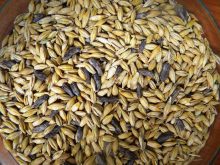Any farmers planning to grow barley for malting purposes, should try and line up contracts before they seed and know the barley specifications malting companies are looking for, says a grain procurement specialist.
For most malting programs a high yielding, high quality barley with plump kernels, 13 per cent seed moisture, with a 95 per cent or higher germination rate, with a lower 11 to 12 per cent protein content, is welcome by most buyers, says Kevin Sich with Rahr Malting in Alix, Alberta.
- Read more: Tips for hitting malt barley grade
Read Also

Claas brings 1000 Series SP forage harvesters to Canada
In mid-August, Claas unveiled its new line of Jaguar forage harvesters at an event in Visalia, California, deep in the heart of that state’s dairy region.
“Malt barley has essentially become a specialty crop,” says Sich. “There are a number of malting companies looking for high quality malt barley to supply their various contracts. Some have specific requirements. It is a competitive market and maltsters like to know they are dealing with producers with potential be consistent suppliers and a track record of producing quality malting barley.
”Sich says only about 25 per cent of the barley seeded for malting purposes, actually makes malt quality. But growing the crop on spec, in hopes of finding a buyer once it is combined, can be risky and disappointing. So it is important to line up a marketing contract well before seeding. January is a good time to be checking market opportunities.
Contracting also helps farmers with variety selection. There are several malting barley varieties on the market, but maltsters do have their favourites, says Sich. AC Metcalfe, for example, is a popular, long-standing two-row malting barley variety favoured in many export markets; CDC Copeland has become a popular two-row variety; and AAC Syngery is a newer, high yielding, two-row variety. CDC Meredith was a very popular variety at one time — great from an agronomic standpoint, but it was found to deliver inconsistent and undesirable results in the malting process.
Malsters and a growing number of microbreweries today are often looking for very specific malt barley requirements, so it pays to do some homework long before you seed to make sure you are producing a variety the market is interested in.















